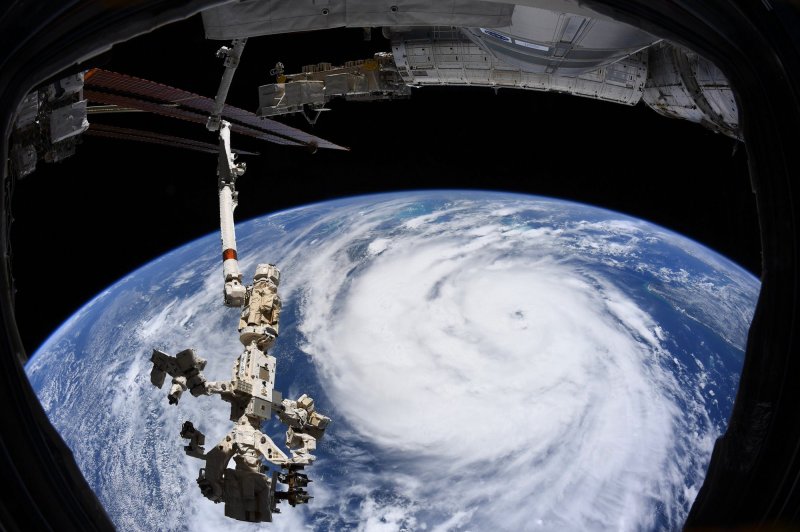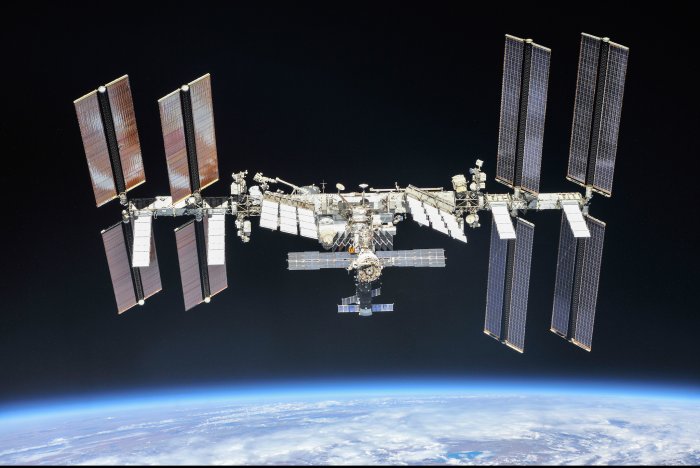1 of 5 | Astronaut Thomas Pesquet took this photo of Hurricane Ida from the International Space Station on August 29. Photo courtesy of NASA |
License Photo
Sept. 21 (UPI) -- Policymakers warned Tuesday that Congress must move quickly to extend the life of the International Space Station to 2030 and develop new space stations or risk a costly gap in space exploration.
Abandoning the space station, which is to be decommissioned in 2028, without replacements would only serve the interests of China, which has a new space station in orbit, U.S. Rep. Brian Babin, R-Texas, said during a congressional hearing held virtually Tuesday morning.
"If they [China] are the only game in town, other nations will seek to partner with them to gain access to space. This would erode America's strategic leadership," Babin said.
NASA and space industry experts delivered the testimony to the House Space and Science Subcommittee, chaired by U.S. Rep. Don Beyer, D-Va.
The committee made no formal budget or policy recommendations, but Beyer said it was important to approach the space station's role and upcoming funding needs "with eyes wide open."
NASA has solicited proposals and received more than 10 from U.S. companies that want to build and launch new orbiting habitats, said Robyn Gatens, NASA's director of the space station.
NASA alone spends $3 billion to $4 billion per year on the International Space Station, and expects to save up to $1 billion per year if it can rely on private space stations instead, Gatens said.
"Extending the operation of the ISS could give us private industry time to develop the capabilities and experience to operate in [low-Earth orbit] and to deploy the platforms that will meet the needs of NASA and other users there," Gatens said.
"NASA envisions a transition period of roughly two years, during which both ISS and commercial ... destinations are operational."
But space industry representatives said Congress must adequately fund NASA to stimulate the growth of commercial activity in orbit.
If not, the U.S. space program would risk a gap like the nine-year delay between the space shuttle's retirement in 2011 and SpaceX's astronaut launch to the space station in 2020, said Jeffrey Manber, CEO of Houston-based space firm Nanoracks.
"The challenge to ensure a seamless transition is more urgent today than with the shuttle, as our reliance on space assets is far greater today," Manber said.
"I don't fear cooperation and competition with China, but we cannot allow even the perception that we will cede 20-plus years of humans working [in orbit] to others."
Cooperation with Russia's space program will be vital to keep the International Space Station operating, especially given recent problems like air leaks and the growing threat of space debris, former astronaut William Shepherd testified.
"I think the answer to this is to reestablish a much more intimate working relationship with our Russian counterparts," Shepherd said, adding that more discussion with Russia "would have been very common 20 years ago."
Russia is a major partner in the international coalition of nations that operate and use the space station, having launched the first section in 1998. Other partners are Europe, Japan and Canada.
Astronaut Kate Rubins said research aboard the space station is crucial to any deep space missions NASA intends to tackle because science still has much to learn about how humans deal with long-term space exposure -- including the effects of radiation and weightlessness.
NASA intends to turn over research and human occupation in low-Earth orbit of space to private companies after 2030, but the agency also must finalize plans to bring down the space station after it is retired.
The agency's proposal for such disposal envisions using a Russian Progress spacecraft, modified so it could direct the space station into a fiery re-entry through the atmosphere over the Pacific Ocean.
NASA told UPI recently that the disposal plan is subject to ongoing international negotiations. Beyer said at the close of Tuesday's hearing that he intends to seek more information about NASA's disposal plan in a future hearing.
The International Space Station is photographed by Expedition 56 crew members from a Soyuz spacecraft after undocking on October 4, 2018. NASA astronauts Andrew Feustel and Ricky Arnold and Roscosmos cosmonaut Oleg Artemyev executed a fly-around of the orbiting laboratory to take pictures of the space station before returning home after spending 197 days in space. Photo courtesy of NASA/Roscosmos
















